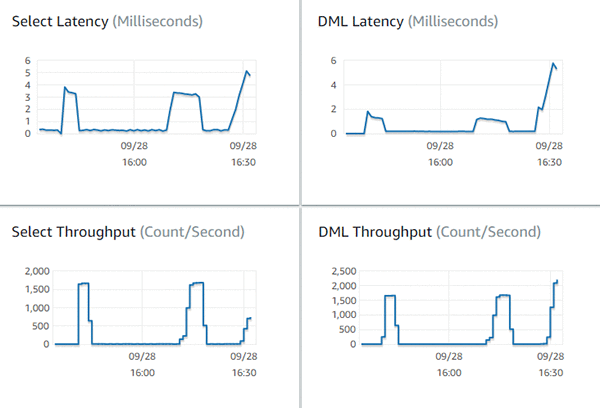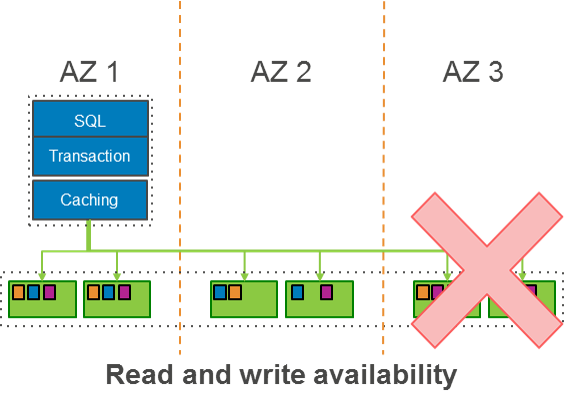AWS Database Blog
Introducing the Data API for Amazon Aurora Serverless v2 and Amazon Aurora provisioned clusters
Traditionally, applications that communicate with relational databases use drivers that provide a persistent connection between the application and the database server. With the advent of serverless applications, including those created using AWS Lambda, persistent connections from the application are no longer practical because serverless applications are, by nature, stateless. What’s more, traditional database drivers often […]
Perform minor version upgrades with a downtime of 1 second or less with Amazon RDS Proxy and Amazon RDS Multi-AZ deployments with two readable standbys
Amazon RDS Multi-AZ deployments with two readable standbys now supports minor version upgrades and system maintenance updates with typically 1 second or less of downtime when used with Amazon RDS Proxy. In this post, we discuss this new feature, its benefits, and the steps to set it up. Amazon RDS Multi-AZ deployments with two readable […]
Local write forwarding with Amazon Aurora
January 2025: This post was reviewed for accuracy. Applications designed in the cloud need to be able to scale. For stateless resources like application servers, this is a straightforward task and can be achieved by simply adding additional compute resources behind a load balancer. For stateful resources such as databases, scaling can be more challenging. […]
Building globally distributed MySQL applications using write forwarding in Amazon Aurora Global Database
AWS released Amazon Aurora Global Database in 2018. Aurora Global Database enables two primary use cases. The first use case is supporting a disaster recovery solution that can handle a full regional failure with a low recovery point objective (RPO) and a low recovery time objective (RTO), while minimizing performance impact to the database cluster […]
Creating a proof of concept using Amazon Aurora
As customers move to the cloud, they’re looking for the best tools to run their applications. When considering relational databases, Amazon Aurora is a frequent choice. This is no surprise, given that Amazon Aurora is MySQL and PostgreSQL wire-compatible and that it can provide greater throughput than either. Aurora provides up to five times the […]
Best practices for migrating RDS for MySQL databases to Amazon Aurora
MySQL is the most popular open-source database in the world. However, many customers find that the undifferentiated heavy lifting of backups, high availability, and scaling of MySQL databases to be complex, time-consuming, or both. This is one of the leading reasons why customers move their existing MySQL footprint to Amazon RDS for MySQL. Amazon RDS […]
Migrate Microsoft Azure SQL Database to Amazon Aurora
Increasingly, customers are looking to move databases from proprietary engines such as Oracle and Microsoft SQL Server to open source engines running on AWS. One of the preferred destinations for this data is Amazon Aurora. In this post, we walk through a migration of a Microsoft Azure SQL database to an Amazon Aurora MySQL cluster […]
Introducing the Aurora Storage Engine
What Is Amazon Aurora? Amazon Aurora is a MySQL and PostgreSQL compatible relational database service that combines the speed and availability of high-end commercial databases with the simplicity and cost-effectiveness of open source databases. Amazon Aurora provides up to five times better throughput than MySQL and three times better throughput than PostgreSQL with the security, availability, […]







